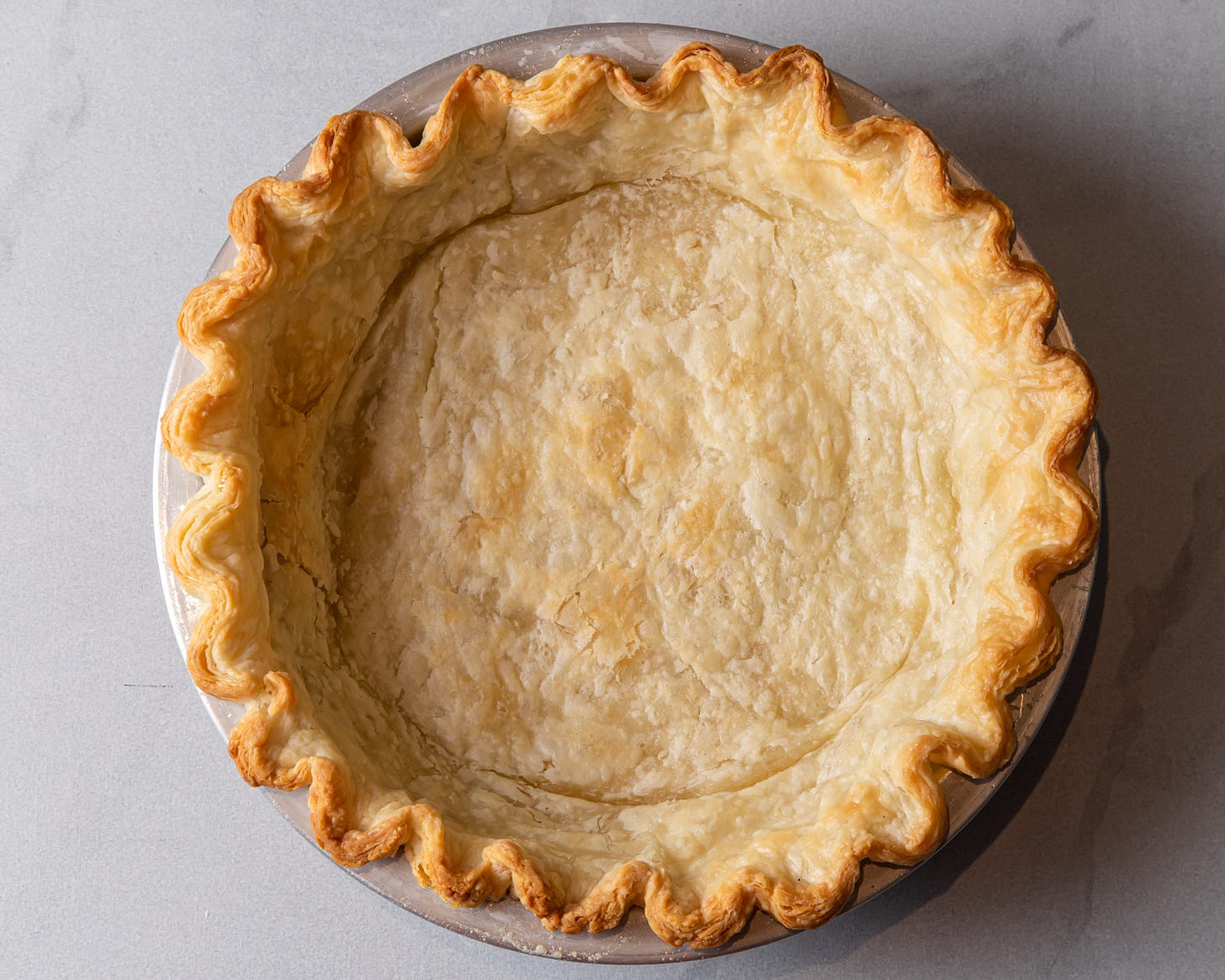Pie Camp: Week 2 (How to Blind Bake a Pie Crust)
Have visions of flaky pie shells without stress? We got you.
Hi Bakers!
Welcome to week two of PIE CAMP! Pie Camp is all about planning and getting ahead with our Thanksgiving pies so that we can have a stress-free, enjoyable holiday full of flaky crusts and tasty pies.
Today we are learning all about baking pie crusts and have a fantastic recipe for my Get-Ahead Pumpkin Pie coming later this week. Custard pies benefit from starting with a partial or fully baked crust. Let’s take a closer look at when and why we blind bake:
What is Blind Baking?
To blind bake a pie crust is to bake pie dough in a pie pan without filling. The end result is a fully baked, empty pie crust.
How it Works:
The pie dough is rolled out and fitted into a pie pan. It holds its shape by being lined with foil or parchment paper then filled with pie weights. The weights keep the bottom from puffing up and the sides from slumping to make way for the filling.
Once partially baked, the pie weights are removed and the crust is baked until done and slightly golden.
Why and When Do We Blind Bake?
For no-bake fillings, most single-crust pies and custard pies, the crust needs to be fully baked before adding in the filling. Pies like lemon meringue, chess, and French silk pies all start with a baked crust.
For example, the filling for a banana cream pie does not spend any time in the oven and therefore the pie crust needs to be fully baked before assembling.
Likewise, something like a chess pie spends very little time in the oven compared to a deep-dish apple pie. Here, pre-baking the pie crust gives it a head start to make sure the crust is nice and golden when the filling is done. Secondly, the moisture from custard fillings can make an unbaked pie crust soggy - and nobody wants a soggy bottom!
To get the rest of this article and the full photo tutorial, please upgrade your subscription or sign up for a free 7 day trial!
Keep reading with a 7-day free trial
Subscribe to Baker's Notes to keep reading this post and get 7 days of free access to the full post archives.






